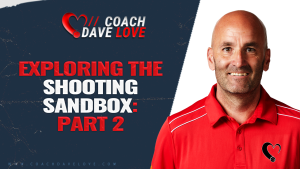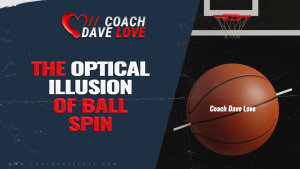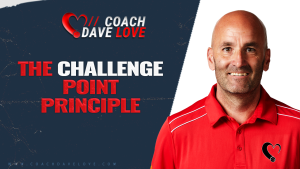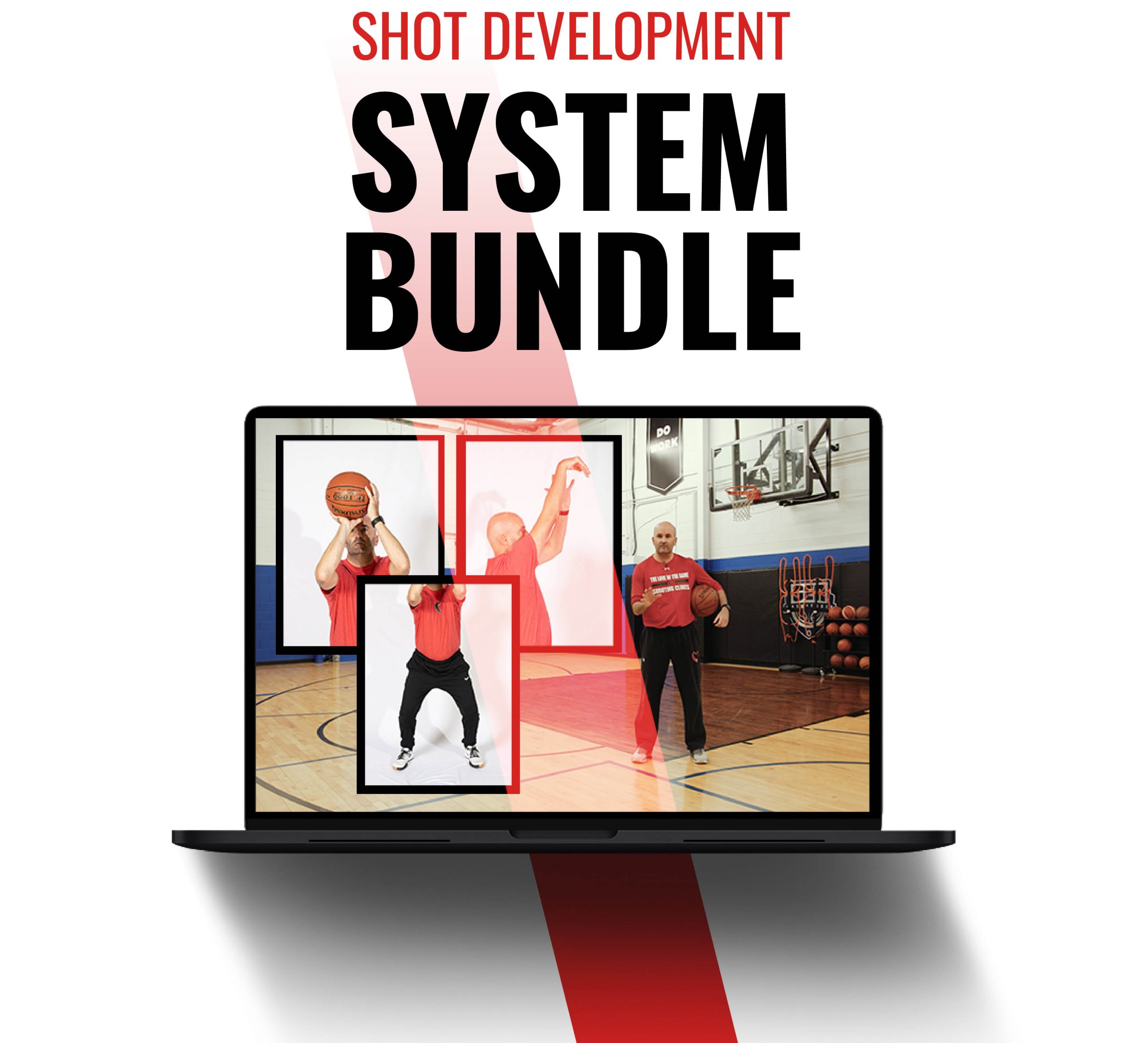Every player is different and has different needs. They can’t be coached the same way.
PLUS, every age group will have different limitations, needs, and abilities, so they should have different goals.
I want to explain the things that I would focus on with different age groups. But let me be clear… these are not absolutes. There are no absolutes.
As coaches, especially with teaching shooting, we need to constantly take educated guesses in the balancing act of “how much do I need to simplify for them to understand” versus “how complicated can I make this so it’s like a game?”
You never KNOW the answer. So go with your experience, intuition and make an educated guess. Then you can adjust based on the results.
One Quick Reminder
Our job as coaches is to DEVELOP. Focus on that word and not the word “change”. “Change” implies that the process will happen quickly, or even instantaneously.
It doesn’t. Even if a player is able to “change” the way they do things, the development of the new HABIT will take time. You can quickly “change” the way I swing a golf club, or hit a tennis ball, but it will still take time for me to be COMFORTABLE with the new habit, to get GOOD at the new habit, and to TRUST the new habit.
Always plant seeds, but just don’t expect the seeds to be a fully grown plant the next day. Continue to nurture it, water it, get it the nutrients the plant needs.
When my youngest daughter was about 8 years old, I asked her to shoot an imaginary basketball like a tiny Klay Thompson would shoot a basketball. Then I gave her a real basketball (even a small ball on a low hoop) and she looked like most 8 year olds do while shooting a basketball. WHY?
The imaginary ball had no weight. The small basketball was really heavy to her. And since she wasn’t going to get significantly stronger over the next few minutes, I had to be patient. But I continued to plant seeds. Shooting imaginary shots every once in a while, or a couple reps of form shooting here and there. I wasn’t expecting the plant to grow, I was just planting the seed so that we’d have something to work from when her body was more ready.
Ages 0-9
No player is going to be GREAT at 22 years old if they quit the game at 9 years old. So my focus when I work with players under 10 (which I admittedly don’t do often) is for them to like what we are doing.
I’ll sprinkle in some information, I’ll tailor the drills so that they can be as successful as possible. But mostly I just want them to have FUN.
I can try all I want to teach them the right way to shoot but I’m up against three significant obstacles.
- They aren’t even close to being strong enough to do most things well.
- They don’t have the self-awareness to know that they might not be doing things in an optimal way – if it feels comfortable, and the ball goes in once in a while, they think they must be right.
- They don’t have the attention span to listen to detailed explanations or sit through a lot of deliberate practice yet.
No matter how hard I work, I’m not going to overcome these obstacles. So rather than trying to change that, I try to embrace it.
My only goal is that every 9 year old still wants to play basketball when they are 10.
Ages 10-12
This is where I start to get a little more detailed about physical teaching.
Again, players of this age group usually aren’t physically strong enough to shoot with great upper body habits. So if I invest a whole bunch of time in building those habits, players likely aren’t going to win that battle despite everyone’s best efforts. I’ll continue to plant seeds on upper body work, but do not expect any significant growth yet.
The area that I focus the most attention on for this age group is the lower body – specifically foot width.
My goal is for players to start to develop the habit of starting their shot from a balanced, stable position in an athletic body posture.
I would like to see players have a wide shooting base (feet hip width apart) and be comfortable shooting out of an athletic stance (knees bent, hips back, shoulder forward).
As those habits grow, I would also want to see them learn to control the finishing position of their shot as well. Players should be learning to finish in a stable position, without having created negative energy by rotating their body.
Looking for great footwork and stability drills? Trying to develop shooting with pre-teens? I can help with that.
Ages 13-15
When working with players of this age I start to focus more on how their hands hold the ball and are used in the shooting motion. Players are now becoming strong enough, and have big enough hands to start developing and executing these habits.
My goal would be to help players identify the middle of their grip (for most players it is their index finger), and learn to get the middle of their grip on the middle of the ball as early in their shot as possible.
Once a player is getting the middle of their shooting hand under the middle of the ball at the set point, THEN they can start to learn to get the guide hand off the ball. Remember, we can’t correct the guide hand issues until the shooting hand is ready to fully control the shooting motion itself.
Trying to teach proper guide hand positioning? Click here for access to my habit building drills
Ages 16-18
Players in this age range are now strong enough to shoot the ball from distance, so I focus on developing habits that will allow them to shoot the ball consistently and generate the necessary arc.
I would focus on creating a smooth ball path from triple threat position, through a higher set point over the nose, and in an upwards trajectory that will create arc. Most players younger than sixteen tend to have a set point down around their chin or shoulder level, and their shot is flat because of it. I would work to lift that set point over the nose.
In addition, because the quality of defense is improving so much at this age, it is imperative that players learn to protect the ball throughout the early shooting motion. Players need to learn to keep the ball close to their body for protection, but also for the seamless flow of power.
Looking for drills to create a strong transition between triple threat and set point? Trying to create better arc? I can help with that.
Ages 18+
Once a player is 18 years or older we can hopefully turn all of our attention to the details in their specific shot.
Hopefully the player is in a position to be able to get significant individual practice time with a higher level coach. And ideally they also would have the physical strength and mental maturity to focus on the necessary details.
WHAT SPECIFICALLY DO I DO?
These are meant to be general guidelines, not hard/fast rules.
I always try to make sure I pick a smaller battle that I can actually win versus trying to do too much and not making significant progress with any of it.
Now the challenge becomes “what drills and progressions can I use to actually build these habits?”
I would recommend coaches use my SHOT DEVELOPMENT SYSTEM BUNDLE. That bundle is broken up into 3 systems that correspond to the different age groups… “Consistency and Balance” – Ages 10-12. “Pure Release” – Ages 13-15. “Fluidity and Arc” – Ages 16-18.
If you know that one program will tackle a player’s biggest bad habit, and they are strong enough to win the battle, by all means go outside the recommended ages. But if you are leading a youth program and want to create a shooting development program within your group, stick to the age groups.
